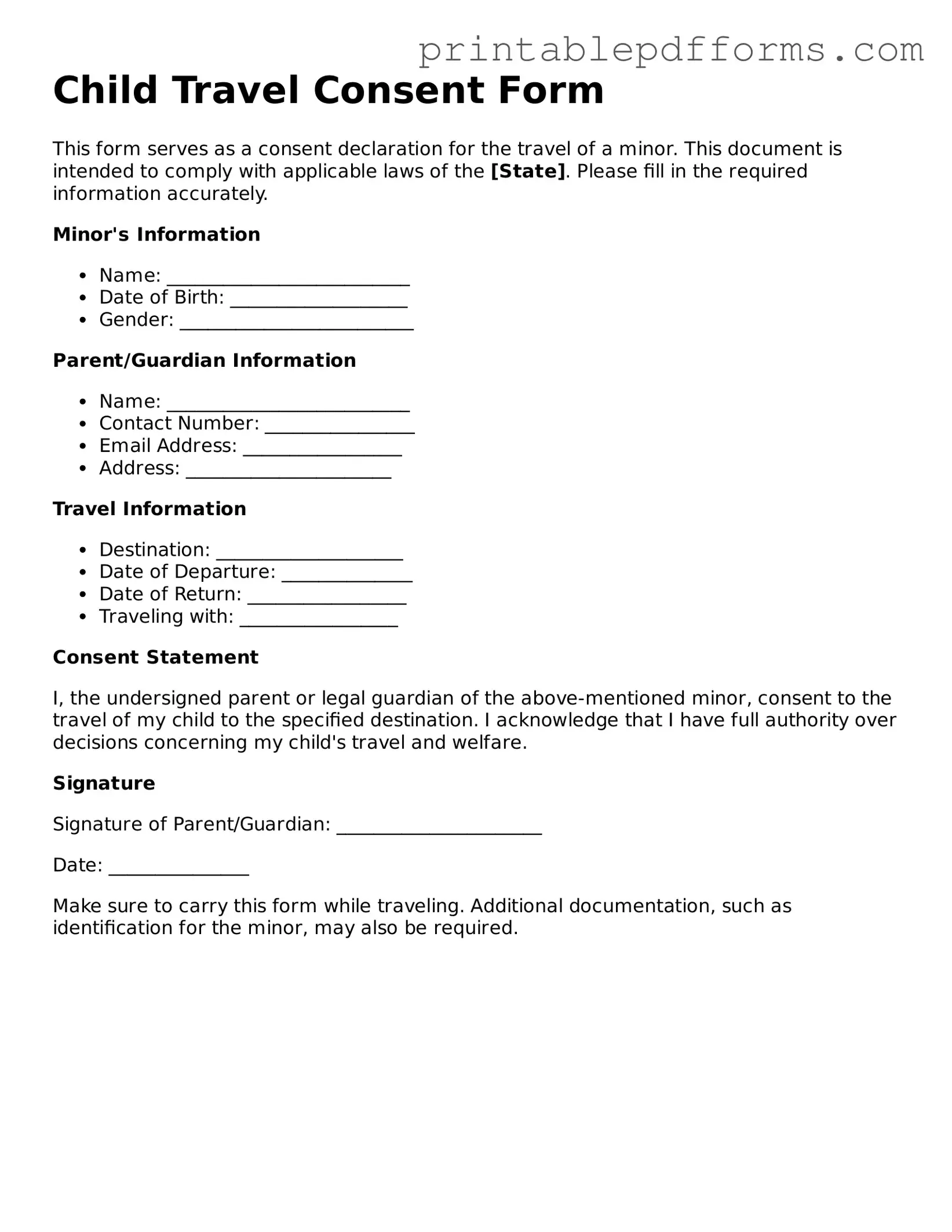A Child Travel Consent Form is a legal document that allows a child to travel with someone who is not their parent or legal guardian. This form helps to ensure that the adult accompanying the child has permission to take them on a trip, whether it’s a domestic or international journey. It serves as a safeguard against potential issues, such as custody disputes or misunderstandings at border crossings.
You typically need a Child Travel Consent Form when a child is traveling without their parents or legal guardians. This includes situations such as:
-
Traveling with a relative, family friend, or other adult.
-
Going on a school trip.
-
Traveling internationally, especially across borders.
While not always required, having this form can help avoid complications during travel.
The form should be signed by the child's parents or legal guardians. If both parents are involved in the child's life, it is advisable for both to sign the document. In cases where one parent is absent, the form should include a statement about their absence and any relevant custody arrangements.
A typical Child Travel Consent Form includes:
-
The child's full name and date of birth.
-
The name of the adult traveling with the child.
-
The destination and dates of travel.
-
Contact information for the parents or guardians.
-
Emergency contact information.
-
Any specific medical information or instructions.
This information helps ensure that all parties are informed and prepared for the trip.
While not universally required, many countries recommend or require a Child Travel Consent Form for minors traveling without their parents. It is wise to check the entry requirements of the destination country and any layover countries. Even if it’s not required, having the form can help avoid complications.
Yes, you can create your own Child Travel Consent Form. However, it’s important to ensure that it includes all necessary information and meets any legal requirements. Many templates are available online that can help guide you in drafting a comprehensive and effective form.
Notarization can add an extra layer of authenticity to the Child Travel Consent Form. To get it notarized, follow these steps:
-
Complete the form with all required information.
-
Do not sign the form until you are in the presence of a notary public.
-
Bring valid identification for all signers.
-
Pay any fees associated with the notarization.
The notary will then witness the signing and provide their seal, which can help validate the document.
What if the child’s other parent does not consent to the travel?
If one parent does not consent, it can complicate matters. In such cases, it may be necessary to seek legal advice or obtain a court order allowing the travel. This is especially important if there are custody arrangements in place that restrict travel. Always prioritize clear communication and legal guidance to navigate these situations.
The validity of a Child Travel Consent Form can vary. Generally, it is recommended to use the form for a specific trip or time frame. If the child will be traveling frequently, consider drafting a new form for each trip or updating it regularly to reflect current circumstances.
Templates for Child Travel Consent Forms are widely available online. Many legal websites, travel agencies, and family law organizations provide free or paid templates. Ensure that any template you choose is up-to-date and complies with your state’s laws.
